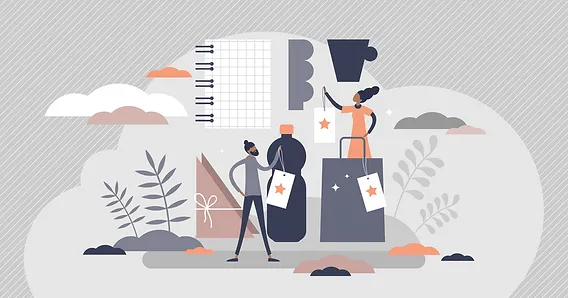
remote triaging
In an age where technology permeates every aspect of our lives, healthcare is no exception. Remote triaging is emerging as a transformative solution in modern healthcare delivery, ensuring efficient and timely care while addressing challenges like overcrowded emergency rooms, limited access to specialists, and high healthcare costs. This article explores the concept of its benefits, implementation, challenges, and the future of healthcare in the digital era.
What is Remote Triaging?
Remote triaging is assessing, prioritizing, and managing patient care needs remotely using digital tools and communication technologies. This approach enables healthcare professionals to determine the urgency of a patient’s condition, provide initial guidance, and decide on the next steps without requiring an in-person visit.
Traditionally performed in hospitals, triaging extends to telehealth platforms, mobile applications, and virtual consultations, making healthcare more accessible and efficient.
How Does Remote Triaging Work?
Remote triaging typically involves the following steps:
- Patient Interaction: Patients submit their symptoms via a telehealth app, online portal, or call center.
- Data Collection: Digital tools gather patient history, symptoms, and vital signs through questionnaires or wearable devices.
- Assessment: Healthcare professionals or AI-powered algorithms evaluate the data to prioritize care needs.
- Guidance: Patients receive advice on self-care, prescriptions, or needing in-person consultation or emergency care.
This system ensures that patients with urgent needs are prioritized, while those with less critical conditions can receive care remotely or be scheduled for later follow-ups.
Key Benefits of Remote Triaging
Improved Access to Care
Eliminates geographical barriers, providing access to medical advice for patients in rural or underserved areas. It bridges the gap between patients and specialists, ensuring timely interventions.
Reduced Healthcare Costs
Remote triaging reduces unnecessary emergency room visits and hospital admissions by managing non-urgent cases remotely, lowering costs for both patients and healthcare systems.
Enhanced Efficiency
Healthcare providers can prioritize critical cases, allocate resources effectively, and reduce wait times. This streamlined approach improves overall system efficiency.
Better Patient Outcomes
Early assessment and intervention can prevent complications and improve recovery rates. Patients also benefit from timely guidance and support.
Patient Convenience
Patients can access care from the comfort of their homes, avoiding long commutes and waiting times. This convenience enhances patient satisfaction and adherence to medical advice.
Technologies Enabling Remote Triaging
The success of remote triaging relies on advanced technologies:
- Telehealth Platforms: Secure video conferencing and chat platforms facilitate virtual consultations.
- AI and Machine Learning: Algorithms analyze patient data to provide accurate assessments and recommendations.
- Wearable Devices: Smartwatches and health monitors track vital signs like heart rate, blood pressure, and oxygen levels in real-time.
- Mobile Apps: User-friendly apps guide patients through symptom checkers and provide triaging results.
- Cloud Computing: Secure cloud storage ensures seamless data sharing between patients and healthcare providers.
Applications of Remote Triaging
Emergency Care
Remote triaging helps emergency departments manage high patient volumes by assessing cases remotely and advising on the best course of action.
Chronic Disease Management
Patients with chronic conditions can use tools for regular monitoring and early detection of potential complications.
Pandemic Response
During pandemics like COVID-19, it minimizes hospital overcrowding and reduces the risk of virus transmission by guiding patients remotely.
Pediatric and Elderly Care
Supports vulnerable populations like children and older people by offering accessible, non-invasive assessments.
Mental Health Services
Virtual platforms enable mental health professionals to triage and provide care for patients with anxiety, depression, or other conditions.
Michael Keaton’s Health Journey and Awareness
what disease does michael keaton have? The beloved actor Michael Keaton has diseases like Parkinson’s. Keaton’s personal journey has sparked discussions around chronic neurological conditions and the importance of early diagnosis and management. While Keaton has not publicly disclosed any specific diagnosis for himself, he has often highlighted the challenges faced by those living with debilitating diseases, emphasizing the need for innovative healthcare solutions like remote triaging to ensure timely interventions and support for patients globally. His advocacy aligns with the broader mission of leveraging technology to make healthcare accessible and efficient for all.
Challenges in Remote Triaging
Data Privacy Concerns
Collecting and sharing sensitive health data raises concerns about patient privacy and cybersecurity risks.
Digital Divide
Not all patients can access smartphones, reliable internet, or the technical skills required for platforms.
Accuracy and Reliability
AI-powered tools may misinterpret symptoms or fail to consider complex medical histories, potentially leading to incorrect assessments.
Resistance to Change
Healthcare providers and patients may hesitate to adopt remote triaging due to unfamiliarity or doubts about its effectiveness.
Future of Remote Triaging
Remote triaging is poised to become a cornerstone of modern healthcare delivery. Innovations like artificial intelligence, wearable devices, and blockchain technology will enhance its accuracy, efficiency, and security. As healthcare systems continue to digitize, remote triaging will play a pivotal role in ensuring equitable and accessible care for all.
Governments and organizations must address challenges, invest in infrastructure, and promote digital literacy to maximize its potential.
Conclusion
Remote triaging revolutionizes healthcare by providing timely, efficient, and accessible care. By leveraging advanced technologies and addressing challenges, it can reshape the healthcare landscape, making quality care available to all, regardless of location. Its adoption is not just a trend but a necessity in the evolving world of digital health.
FAQs About Remote Triaging
- What is remote triaging, and how does it work? Remote triaging involves remotely assessing and prioritizing patient care needs using telehealth platforms, mobile apps, and AI-powered tools. Patients submit their symptoms, which are evaluated to determine the urgency and guide further care steps.
- What are the main benefits of remote triaging? Key benefits include improved access to care, reduced healthcare costs, enhanced system efficiency, better patient outcomes, and increased patient convenience.
- What technologies are used in remote triaging? Technologies include telehealth platforms, AI algorithms, wearable devices, mobile apps, and cloud computing for data storage and analysis.
- What challenges does remote triaging face? Challenges include data privacy concerns, the digital divide, accuracy and reliability issues, and resistance to adopting new technologies.
- How will remote triaging shape the future of healthcare? Remote triaging is expected to enhance healthcare accessibility and efficiency. Advances in AI, wearable tech, and blockchain will improve its reliability and security, making it integral to digital health strategies worldwide.






